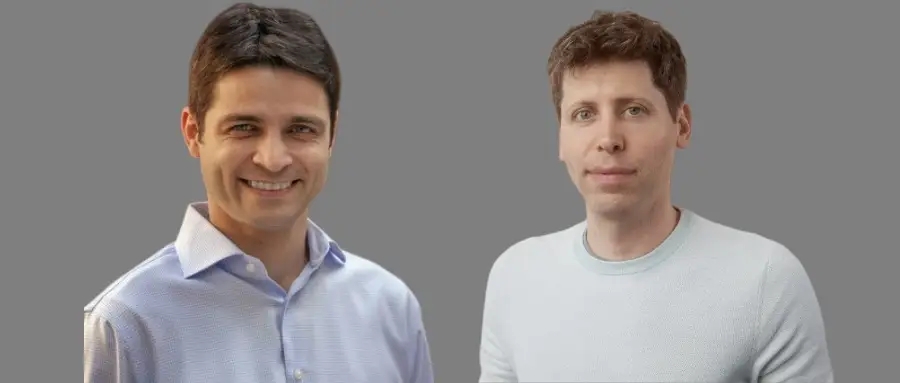
Sam Altman, Co-Founder and CEO of OpenAI, has recruited Mikhail Shapiro—a biomolecular engineer with multiple prestigious awards—to join Merge Labs, a startup focused on brain-computer interfaces.
The company is set to be officially announced by Altman and his co-founder Alex Blania. Foreign media reports suggest that Altman will serve as Chairman of Merge Labs but will not be involved in the company’s day-to-day operations.
Previously, the Financial Times reported that Merge Labs is seeking to raise a total of $250 million from OpenAI and other investors, at a valuation of $8.5 billion.
While Shapiro’s official title has not yet been confirmed, insiders stated that he will be part of Merge Labs’ founding team and is positioned as a core leader in the company’s investor negotiations.
Shapiro is a professor at the California Institute of Technology (Caltech) and a fellow at the Howard Hughes Medical Institute (HHMI). His research focuses on using technologies such as sound waves and magnetic fields to image and control cellular functions deep within living organisms—with a particular emphasis on developing ultrasound-based interactions with the human brain.
This research direction aligns closely with Altman’s vision for BCIs. Altman has publicly stated his opposition to the invasive BCI technology developed by Elon Musk’s Neuralink, expressing a desire to “control ChatGPT with thoughts.”

I. Focused on Non-Invasive Neuroimaging and Control: Shapiro’s Work on Ultrasound-Brain Interaction
Mikhail Shapiro currently holds the position of Max Delbrück Professor of Chemical Engineering and Medical Engineering at Caltech, where he also serves as Director of the Center for Molecular and Cellular Medicine. Additionally, he is a fellow at the Howard Hughes Medical Institute.
His research centers on leveraging technologies like sound waves and magnetic fields to image and control cellular functions in deep tissues of living organisms. At his engineering laboratory at Caltech, Shapiro has pioneered numerous breakthroughs in biomolecular technology, with a strong focus on non-invasive neuroimaging and control techniques.
Notably, he has dedicated significant effort to developing ultrasound-based methods for interacting with the human brain—eliminating the need for craniotomy (skull-opening surgery) required by Neuralink, Musk’s BCI company. Beyond this, Shapiro has also conducted extensive research on ultrasound-based cell detection in the field of gene therapy.
Shapiro has made remarkable achievements in biomolecular engineering. In 2019, he received the Vilcek Prize for Creative Promise in Biomedical Science, an award honoring outstanding early-to-mid-career immigrant biomedical scientists.
He was also the recipient of the 2018 Roger Tsien Award for Excellence in Chemical Biology, named after Nobel laureate Roger Tsien.
In addition to these honors, Shapiro has won awards such as the NIH Pioneer Award, the Packard Fellowship, and the Pew Scholarship.
II. Altman’s Public Opposition to Musk: Aligning Visions on BCIs with Shapiro
In a recent lecture, Shapiro outlined his approach to building BCIs using sound waves and magnetic fields. He proposed that instead of inserting electrodes into brain tissue, a simpler method involves introducing genes into cells—genetically modifying them to respond to ultrasound.
He has publicly stated his mission: “To develop new, less invasive ways to interact with neurons in the brain and cells in other parts of the body.” This vision aligns closely with Altman’s.
According to foreign media reports, at a media dinner in August, Altman explicitly stated, “I would never implant anything that kills neurons like Neuralink’s interface into the brain.” He added, “I want to be able to make ChatGPT respond with my thoughts—maybe I only need a read-only mode.”
Merge Labs is expected to make its official debut within the next few weeks. Foreign media anticipate that Altman will take on the role of Chairman without participating in daily operations—mirroring his position at Tools for Humanity, an eye-scanning startup he co-founded with Blania.
The timing of this announcement echoes a prediction Altman made about the BCI field years ago. “A common Silicon Valley topic is predicting the year when humans will merge with machines (or be overtaken by rapidly evolving AI/genetically enhanced species),” Altman wrote in 2017. “Most guesses fall between 2025 and 2075.”
As previously reported by the Financial Times, Merge Labs is raising new funds at an $8.5 billion valuation, aiming to secure $250 million from OpenAI and other investors.
Conclusion: Merge Labs’ Technical Direction Clarified—Pursuing Non-Invasive BCIs
Shapiro’s joining fully reveals the technical direction Altman has planned for Merge Labs, confirming earlier foreign media reports that the company’s first product will adopt this non-invasive approach.
As the BCI field enters a new phase of competition over technical paths, Merge Labs’ choice of a non-invasive route stands in stark contrast to Neuralink’s invasive technology—and may reshape the future paradigm of human-machine interaction.





